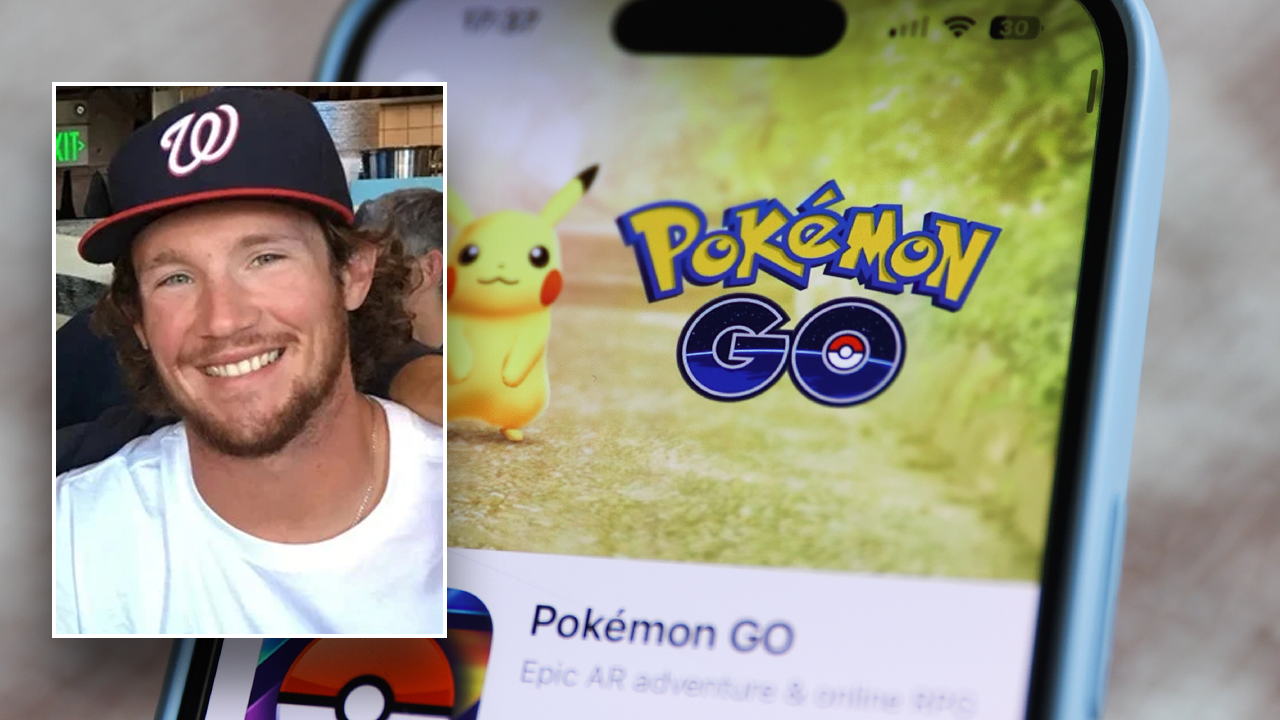Removing your personal information from people-search sites can feel pretty overwhelming. There are hundreds of these sites in the U.S. alone. In fact, the Privacy Rights Clearinghouse says there are over 500 companies that collect and sell personal information.
At first, it might seem impossible to get your details removed from all of them. But here’s the good news: You don’t need to tackle every single site. Your information isn’t on all 500-plus sites.
With a bit of time and persistence, you can remove your info from the major ones, and every removal really counts. Let me show you exactly how to do it yourself.
JOIN THE FREE “CYBERGUY REPORT”: GET MY EXPERT TECH TIPS, CRITICAL SECURITY ALERTS AND EXCLUSIVE DEALS, PLUS INSTANT ACCESS TO MY FREE “ULTIMATE SCAM SURVIVAL GUIDE” WHEN YOU SIGN UP!

A woman scrolling on her laptop (Kurt “CyberGuy” Knutsson)
First, find which people-search sites have your info
The process will be easier if you have a list of people-search sites that have your personal information. Not only can you check them off as you go, but you’ll also need a list for the last step. The easiest place to start is with a free scan that some data removal services provide. These scans automatically check a ton of people-search sites for your personal information and send you a report. You can also search for your full name on Google. This will probably bring up a mix of results, including your social media profiles.
THINK YOU CAN DELETE YOUR DATA YOURSELF? HERE’S WHY YOU’RE PROBABLY WRONG
The bigger your online presence, the more search results you’ll likely have to sift through to find the people-search sites. I recommend searching for your name together with other personal details, like your email, phone number or home address. For some reason, this is more likely to bring up people-search sites, different ones depending on the combination of personal details you try. You may not be able to find all the people-search sites that have your info like this, though. You should also check any state-specific people-search sites, like StateofFlorida.com, and search all of the most popular people-search sites like:
- Whitepages
- Spokeo
- BeenVerified
- Intelius
- MyLife
- PeopleFinders
- Radaris
- TruthFinder
- FastPeopleSearch
- Instant Checkmate
Keep in mind that many smaller or niche sites exist, especially those that are state or region-specific. These sites can be harder to find but may still have your information. Using scanning tools or data removal services can help uncover these less obvious listings.
Follow the opt-out process for each site
Every people-search site has its own opt-out process, but most of them will require you to do something like this:
- Find your listing: You’ll usually need to search for your name, phone number, address or email on the site.
- Submit a removal request: Most sites have an online form where you can request removal. Look for links that say “Opt-Out,” “Do Not Sell My Info” or “Privacy Rights,” which are usually found in the website footer.
- Verify your request: Most sites will send you a confirmation email with a link you’ll need to click. Some ask for a phone call verification. A few people-search sites request documents, like a photo ID (I recommend avoiding sending sensitive documents unless absolutely necessary). If a site insists on ID verification, try contacting their support to ask about alternative methods or consider skipping that site if you’re uncomfortable.
TOP 20 APPS TRACKING YOU EVERY DAY
Pro tip: Use a separate email address for opt-out requests
Many sites require email verification. Using your regular email can expose it to spam or further data collection. Creating a dedicated or alias email address just for these requests helps protect your primary inbox and keeps things organized. Also, using various email aliases makes it so you don’t have to worry about all your info getting taken in a data breach. An email alias address is a great way for you to stop receiving constant spam mail by simply deleting the email alias address. See my review of the best secure and private email services here.

A woman working on her laptop (Kurt “CyberGuy” Knutsson)
Phone verification and a secondary number
If a site requires phone verification, consider using a secondary number to avoid exposing your personal phone number. Services like Google Voice can provide you with a secondary number that you can use for online activities, keeping your primary number private. The process should take between five and 20 minutes for each site on your list, depending on how difficult they make it for you. But once you submit the request, removal is usually pretty quick. Your information should be off the site within 24 hours to a week, though it can sometimes take up to 30 days.
Don’t forget about Google search results
People-search sites aren’t the only places your info can pop up. Sometimes your personal info appears directly in Google search results, pulled from public records or other sites. If you find sensitive info in Google results, you can request removal through Google’s own removal tools, especially if the info includes things like your Social Security number, bank account info or images you don’t want to be public. This is a separate process, but it is worth doing alongside removing info from people-search sites.

Google Search image (Kurt “CyberGuy” Knutsson)
THINK YOU CAN DELETE YOUR OWN DATA? WHY IT’S HARDER THAN YOU THINK
Keep in mind, this isn’t a one-and-done deal
Even after you remove your info, there’s a good chance it’ll show up again. People-search sites constantly scrape public records and other databases to refresh their listings. Some sites offer “suppression lists” you can add your name to, but it’s not a perfect system. Small changes, like a slightly different address, a new phone number or a missing middle name, can slip past their filters and pop up as a “new” profile.
The best way to stay on top of it is to set a reminder to recheck the main people-search sites every few months and repeat the opt-out process when needed. Maintaining a detailed tracker or spreadsheet with the sites you’ve contacted, dates and confirmation info can make this easier and help you avoid missing any sites.

A woman working on her laptop and scrolling on her phone (Kurt “CyberGuy” Knutsson)
HOW TO GET RID OF ROBOCALLS WITH APPS AND DATA REMOVAL SERVICES
A quick note on your rights (updated for 2025)
There is still no federal data privacy law in the U.S. that grants everyone the automatic right to opt out of people-search sites. However, the landscape is changing quickly at the state level. As of 2025, at least thirteen states have passed comprehensive privacy laws that give residents stronger opt-out rights, including:
- California (California Consumer Privacy Act/California Privacy Rights Act – CCPA/CPRA)
- Virginia (Virginia Consumer Data Protection Act – VCDPA)
- Colorado (Colorado Privacy Act – CPA)
- Connecticut (Connecticut Data Privacy Act – CTDPA)
- Utah (Utah Consumer Privacy Act – UCPA)
- Delaware (Delaware Personal Data Privacy Act – DPDPA)
- Iowa (Iowa Consumer Data Protection Act – ICDPA)
- Nebraska (Nebraska Data Privacy Act – NDPA)
- New Hampshire (New Hampshire Data Privacy Act – NHDPA)
- New Jersey (New Jersey Data Privacy Act – NJDPA)
- Tennessee (Tennessee Information Protection Act – TIPA)
- Minnesota (Minnesota Consumer Data Privacy Act – MCDPA)
- Maryland (Maryland Online Data Privacy Act – MODPA)
If you live in one of these states, you now have a much stronger legal footing to demand that people-search sites remove your information. Many of these laws require companies to honor requests to opt out of the sale or sharing of your personal data, and some even require businesses to respect browser-based global opt-out signals. But even if you don’t live in one of these states, you should still submit removal requests. Most people-search sites do not filter opt-out requests by state; they generally process any request they receive to avoid potential legal issues, regardless of your location.
If this sounds like too much work, there’s help
Removing your data manually takes real time and commitment, especially since you have to keep doing it to stay off these sites. That’s why many people turn to personal data removal services. Instead of going site by site yourself, a service can automatically send removal requests on your behalf, track the responses and re-request removals if your data reappears later.
While no service promises to remove all your data from the internet, having a removal service is great if you want to constantly monitor and automate the process of removing your information from hundreds of sites continuously over a longer period of time. Check out my top picks for data removal services here.
Kurt’s key takeaways
Manual removal is free and gives you full control, but it takes time and requires ongoing effort. Automated services cost money but save you time, handle rechecks and can catch new listings faster. Choose what best fits your budget and privacy needs. If you follow these steps and stay consistent, you can take back control of your personal information online. It might take some work, but every removal counts toward protecting your privacy.
CLICK HERE TO GET THE FOX NEWS APP
Do you think it should be your job to constantly remove your info from people-search sites or should companies and lawmakers be doing more to protect your privacy? Let us know by writing us at Cyberguy.com/Contact.
For more of my tech tips and security alerts, subscribe to my free CyberGuy Report Newsletter by heading to Cyberguy.com/Newsletter.
Ask Kurt a question or let us know what stories you’d like us to cover.
Follow Kurt on his social channels:
Answers to the most-asked CyberGuy questions:
New from Kurt:
Copyright 2025 CyberGuy.com. All rights reserved.








